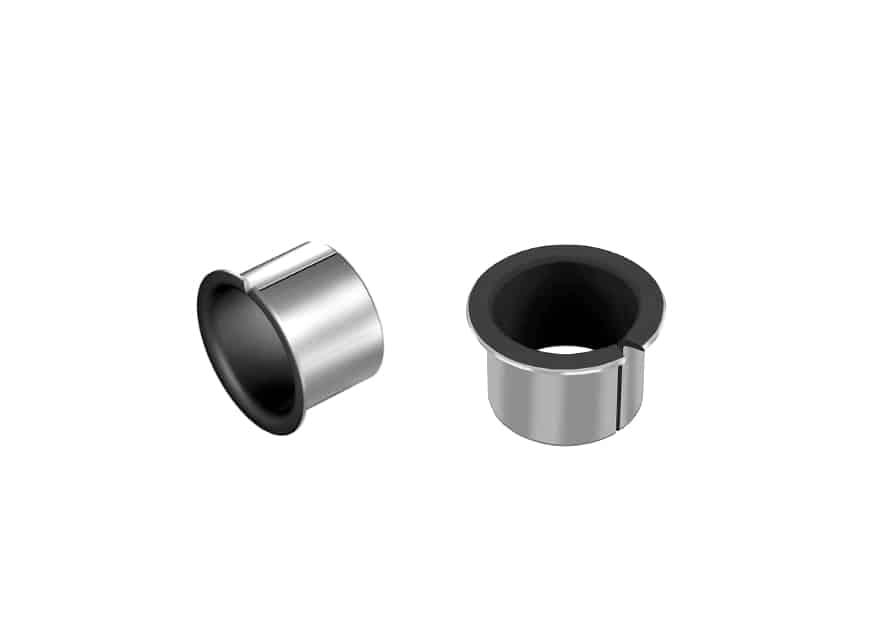Understanding Collar Bushings and Split Bushings in Steel for Metric Size Applications, Split Bushings
Metric Steel Bushings with Polytetrafluoroethylene
Bushing components are essential in various mechanical assemblies, offering smooth operation and longevity to pivoting parts in machinery. Among these, collar bushings and split bushings crafted from steel stand out due to their robustness and versatility in metric size applications. This article delves into the specifics of these bushings, exploring their design, benefits, applications, and maintenance tips to help you choose the right bushing for your needs.
What are Collar Bushings?
Collar bushings, also known as flanged bushings, are cylindrical bearings that are notable for a flange at one end. The flange acts as a collar, preventing the bushing from moving axially through the bore in which it is installed. This design enhances the bearing’s ability to withstand axial loads while aligning it accurately within the assembly. Typically made from steel, these bushings are highly durable and can sustain significant loads, making them ideal for heavy-duty applications.
Features of Steel Collar Bushings
- Material Durability: Steel collar bushings offer excellent wear resistance and can handle both high physical loads and temperature variations.
- Metric Sizes: Available in various metric dimensions, these bushings can be integrated into numerous systems without the need for customization.
- Design Efficiency: The integral flange simplifies assembly, reducing the number of components needed and ensuring a secure fit in the housing.
What are Split Bushings?
Split bushings, or split sleeve bushings, feature a cut along their length, allowing them to contract or expand for easy installation and removal. This split design is particularly useful in maintenance-heavy applications where minimal downtime is crucial. Made from steel, split bushings are favored for their adaptability and resilience, accommodating slight misalignments and shaft imperfections with ease.
Advantages of Steel Split Bushings
- Flexible Installation: The split design allows for quick replacements, making them ideal for repair work in hard-to-reach places.
- Metric Compatibility: Like their collar counterparts, split bushings are manufactured in various metric sizes, ensuring they meet global mechanical standards.
- Enhanced Durability: Steel construction provides a strong, wear-resistant bearing surface that withstands operational stresses over long periods.
Applications of Steel Collar and Split Bushings
These bushings are utilized in numerous industrial and commercial applications, including:
- Automotive Systems: In gearboxes, clutches, and suspensions where precise alignment and robustness are required.
- Manufacturing Equipment: In conveyor belts, assembly lines, and robotic arms to facilitate smooth and reliable motion.
- Agricultural Machinery: In tractors and harvesters where exposure to harsh conditions is common.
Installation Tips and Maintenance
Proper installation and regular maintenance are vital to maximizing the lifespan of steel bushings:
- Correct Sizing: Ensure that the bushing’s metric size precisely matches the dimensions of the housing and the shaft.
- Regular Lubrication: Although steel bushings are durable, periodic lubrication helps reduce friction and wear.
- Routine Inspections: Regular checks for alignment issues and wear can prevent mechanical failures.
Conclusion
Steel collar bushings and split bushings in metric sizes are indispensable in modern machinery, providing structural support and reducing friction in rotating assemblies. Their robust design and adaptability make them a preferred choice in various industries. By understanding their features and ensuring proper maintenance, you can significantly enhance the efficiency and longevity of your mechanical systems.
Contact Us
For more information or to inquire about our range of steel bushings, please contact us through our website. Our experts are ready to assist you with the right solutions tailored to your specific requirements.








